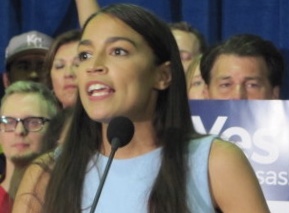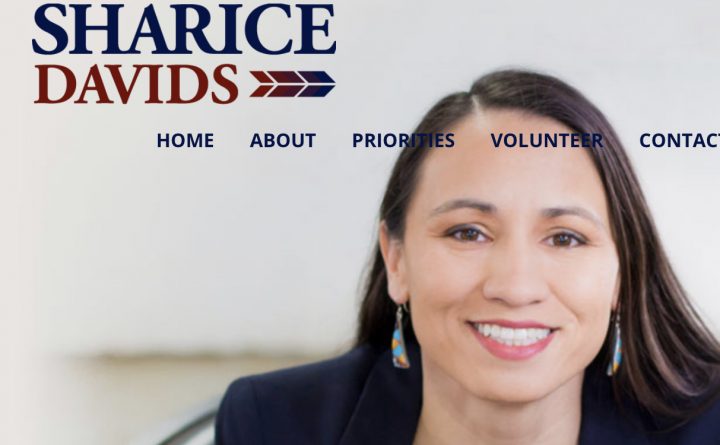Jennifer Mathers, Aberystwyth University for The Conversation .
The 2018 midterms broke the records on female candidates in US elections. More than 20 women were on the Senate ballot, while more than ten times that number stood for the House of Representatives. If we also consider state elections for executive roles such as governor as well as state legislatures, the number of female candidates in 2018 rises by another 3,500. The results mean that several states (including Arizona and Tennessee) will now send their first ever women to the Senate, and more than 100 women will enter the House.
After the new senators and representatives are sworn in, Congress will be more diverse in terms of race and religion – with women making a major contribution to this shift.
Rashida Tlaib (Michigan) and Ilhan Omar (Minnesota) share the distinction of becoming the first Muslim women in Congress. Texas sends both of the first two Latina women to Congress, Sylvia Garcia and Veronica Escobar. Several states will send African American women to represent them in Washington for the first time, too, including Massachusetts (Ayanna Pressley) and Connecticut (Jahana Hayes).
These elections give further support to research that highlights the importance of party loyalty for women as well as men. In other words, all other things being equal, American voters will cling to their own parties, especially when they feel their party is under threat. So we should not be surprised that the combination of Donald Trump’s victory over Hillary Clinton in 2016 and the numerous allegations of sexual harassment against him have motivated far more Democrat women than Republican women to run for office.
Nearly three-quarters of the women who declared their candidacy in 2018 were Democrats. Even after many contenders were eliminated in the primaries, there were still roughly twice as many Democrat as Republican female candidates on the final ballots.
The mid-terms also demonstrate that women can overcome factors that are typically disadvantages for a candidate, such as being a challenger rather than an incumbent, having little or no experience of elected office, and promoting policy positions that are outside the mainstream.
In one of the most high-profile races in the country, New York’s Alexandria Ocasio-Cortez defeated her Democratic primary opponent – an incumbent who had served ten terms in Congress – and went on to victory on November 6. This was despite her calls for policy changes that many described as radical, including government guarantees for universal health care, employment and housing. At the age of 29, Ocasio-Cortez is now the youngest woman ever to be elected to the US House.

Alexandria Ocasión-Cortez, youngest Congresswoman
Changing tactics
Many of the women running emphasised education and healthcare (traditionally regarded as “women’s issues”). But they also prominently presented their views on “hard” policy areas such as national security, immigration, job creation and taxation. Women candidates have not hesitated to be blunt in criticising the records and policies of their opponents, and have performed well in hard-hitting, one-to-one debates. The 2018 mid-terms demonstrate very clearly that there is no such thing as a one size fits all, women’s style of campaigning.
These elections have also shown that, like men, women can leverage their military service records to appeal to American voters. Women veterans winning elected office is not completely new to American politics, but previous examples have been few – if high profile. Tammy Duckworth, a helicopter pilot who lost both her legs in Iraq, was elected to the US House in 2012 and the US Senate in 2016, and is famously the first Senator ever to give birth while in office.
The combination of increasing numbers of women serving in the US armed forces, the opening up of new military roles to women, and the continuous deployment of American troops in war zones since 2001 has created a substantial pool of potential female veteran candidates.
Much attention in this election was devoted to a handful of Democrat female veterans running for Congress against incumbent male Republicans. These women – including Amy McGrath (Kentucky), MJ Hegar (Texas), Elaine Luria (Virginia), and Chrissy Houlahan (Pennsylvania) – had lengthy careers in different branches of the military. They were deployed overseas and used their veteran status to bolster their credibility as first-time candidates. Although their fortunes at the polls were mixed (Luria and Houlahan won; McGrath and Hager lost), all waged smart, well-crafted campaigns that pushed their opponents hard and ensured victory was decided by just a few percentage points.
There is still a long way to go before the US approaches both gender and racial equality in elected office, however. As this article is being written, African American Democrat Stacey Abrams continues her fight to become Georgia’s governor amid allegations of voter suppression that disproportionately affects people of colour.
Her opponent, Georgia secretary of state Brian Kemp, refused to relinquish his role of overseeing the elections despite his candidacy. President Trump himself has weighed in on this election, describing Abrams as unqualified to be governor of the traditionally Republican state – despite her years as an elected representative in the state legislature and her PhD from Yale law school. If Abrams is successful, she will become the first African American woman ever to become governor, not just of Georgia, but of any US state.
Although Abrams may turn out to be among the unsuccessful women candidates of 2018, women’s experiences of putting themselves forward for election is a formative one that can provide a foundation for future campaigns. It is unlikely that we have heard the last of these women.![]()
Jennifer Mathers, Reader in International Politics, Aberystwyth University
This article is republished from The Conversation under a Creative Commons license. Read the original article.






